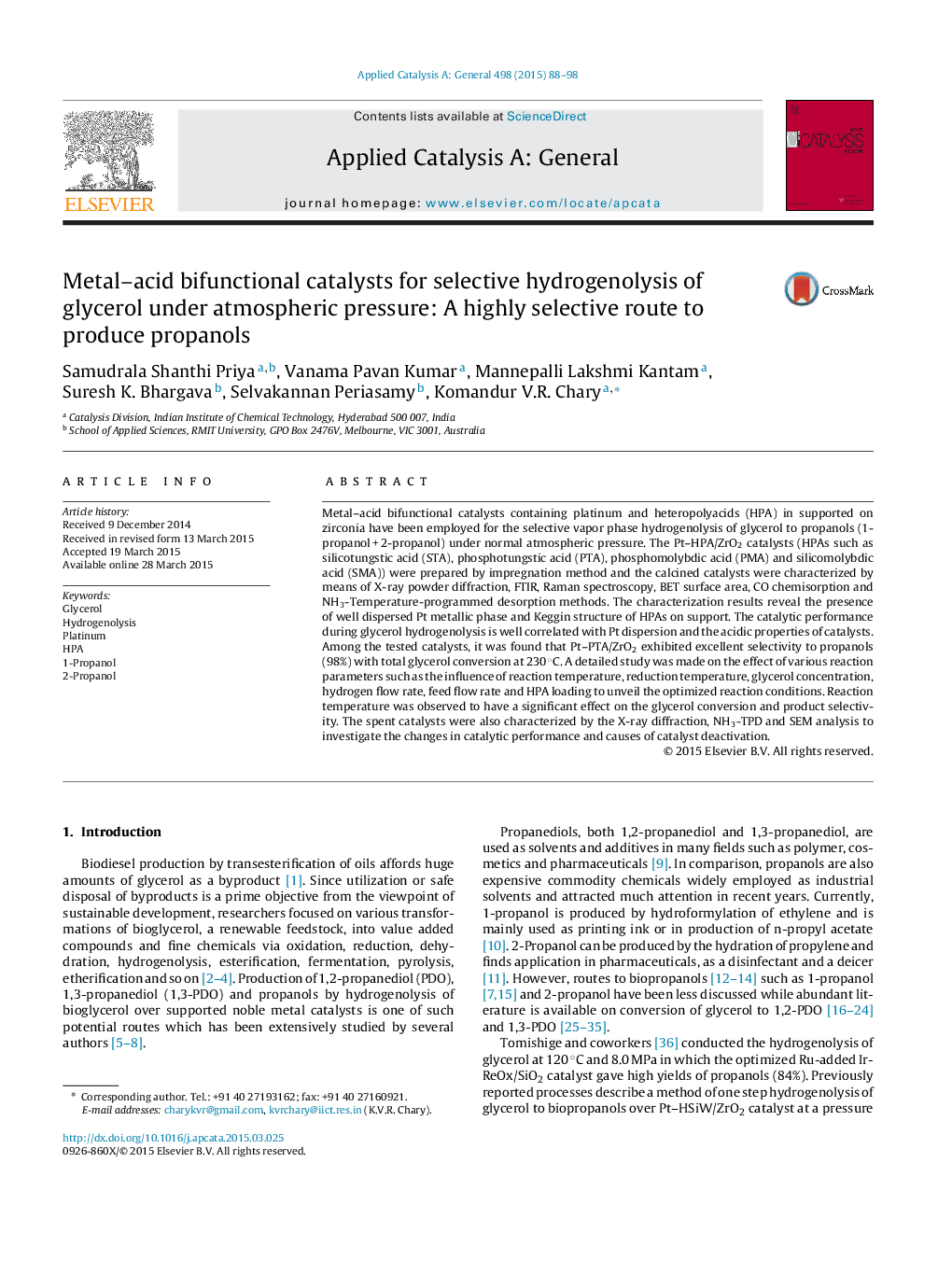| کد مقاله | کد نشریه | سال انتشار | مقاله انگلیسی | نسخه تمام متن |
|---|---|---|---|---|
| 39121 | 45807 | 2015 | 11 صفحه PDF | دانلود رایگان |
• Pt–HPA/ZrO2 catalysts were effective for the glycerol hydrogenolysis.
• The reaction was performed in vapor phase under atmospheric pressure.
• The reaction selectively leads to the formation of 1-propanol and 2-propanol.
• 99.9% glycerol conversion and 98% propanols selectivity were obtained.
• The correlation of catalytic properties with Pt dispersion and acidity of catalyst.
Metal–acid bifunctional catalysts containing platinum and heteropolyacids (HPA) in supported on zirconia have been employed for the selective vapor phase hydrogenolysis of glycerol to propanols (1-propanol + 2-propanol) under normal atmospheric pressure. The Pt–HPA/ZrO2 catalysts (HPAs such as silicotungstic acid (STA), phosphotungstic acid (PTA), phosphomolybdic acid (PMA) and silicomolybdic acid (SMA)) were prepared by impregnation method and the calcined catalysts were characterized by means of X-ray powder diffraction, FTIR, Raman spectroscopy, BET surface area, CO chemisorption and NH3-Temperature-programmed desorption methods. The characterization results reveal the presence of well dispersed Pt metallic phase and Keggin structure of HPAs on support. The catalytic performance during glycerol hydrogenolysis is well correlated with Pt dispersion and the acidic properties of catalysts. Among the tested catalysts, it was found that Pt–PTA/ZrO2 exhibited excellent selectivity to propanols (98%) with total glycerol conversion at 230 °C. A detailed study was made on the effect of various reaction parameters such as the influence of reaction temperature, reduction temperature, glycerol concentration, hydrogen flow rate, feed flow rate and HPA loading to unveil the optimized reaction conditions. Reaction temperature was observed to have a significant effect on the glycerol conversion and product selectivity. The spent catalysts were also characterized by the X-ray diffraction, NH3-TPD and SEM analysis to investigate the changes in catalytic performance and causes of catalyst deactivation.
Reaction scheme: Hydrogenolysis of glycerol to propanols over Pt–HPA/ZrO2 catalysts.Figure optionsDownload high-quality image (109 K)Download as PowerPoint slide
Journal: Applied Catalysis A: General - Volume 498, 5 June 2015, Pages 88–98
